Biorobotics is a discipline merging robotics and bioengineering: biorobotic machines can be exploited to better understand biological phenomena and, at the same time, biology can be used for developing more effective and advanced robotic machines.
The combination of top-quality physical infrastructures and a promoting team with a long-lasting experience in biorobotics is the key to transform a huge infrastructure investment into an international living lab and a melting pot for nurturing and fostering new science and technologies.
The BRIEF infrastructure for biorobotics research and innovation engineering facilities is intended here as the use of biorobotic platforms, middleware, instrumented testing environments, best practices and scientific and technological knowledge as available at the co-proposers units and made accessible to other researchers, based on open calls. They come together with the use of common standards and tools for robot development, experimental data collection, experimental methodologies and performance measures for benchmarking, as well as management, legal, social and ethical considerations. BRIEF is providing a unified infrastructure, thus allowing simplified and wide access, and a diverse one, in terms of research approaches to science-based biorobotics, exploited technologies, fields of applications (in health and sustainability fields).
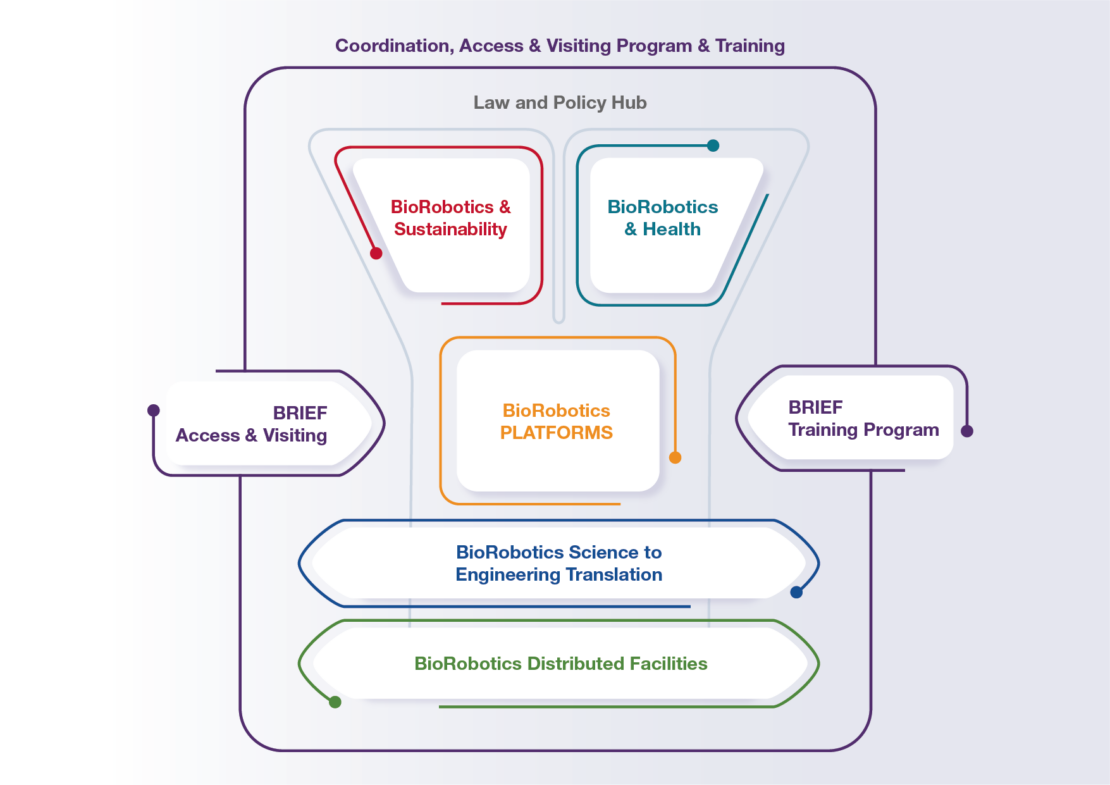
The BRIEF infrastructure was developed through 7 activity blocks.
WP1 includes the administrative and scientific management of the overall program and it is in charge of the managing of the access to the infrastructure.
The WP2, BioRobotics distributed facilities block, is dealing with all the facilities in terms of: i) adaptation of existing buildings to the new technologies and platforms, ii) restoration of additional buildings or construction of new testing environments.
Finally, the technological core of the BRIEF Infrastructure is represented by WP3, WP4, WP5, WP6 and WP7 as here represented.
The block of Biorobotics Science to Engineering Translation, WP3, includes the set-up of all technologies and machines which will be used to develop basic components (both hardware and software) to enable more evolved biorobotic systems.
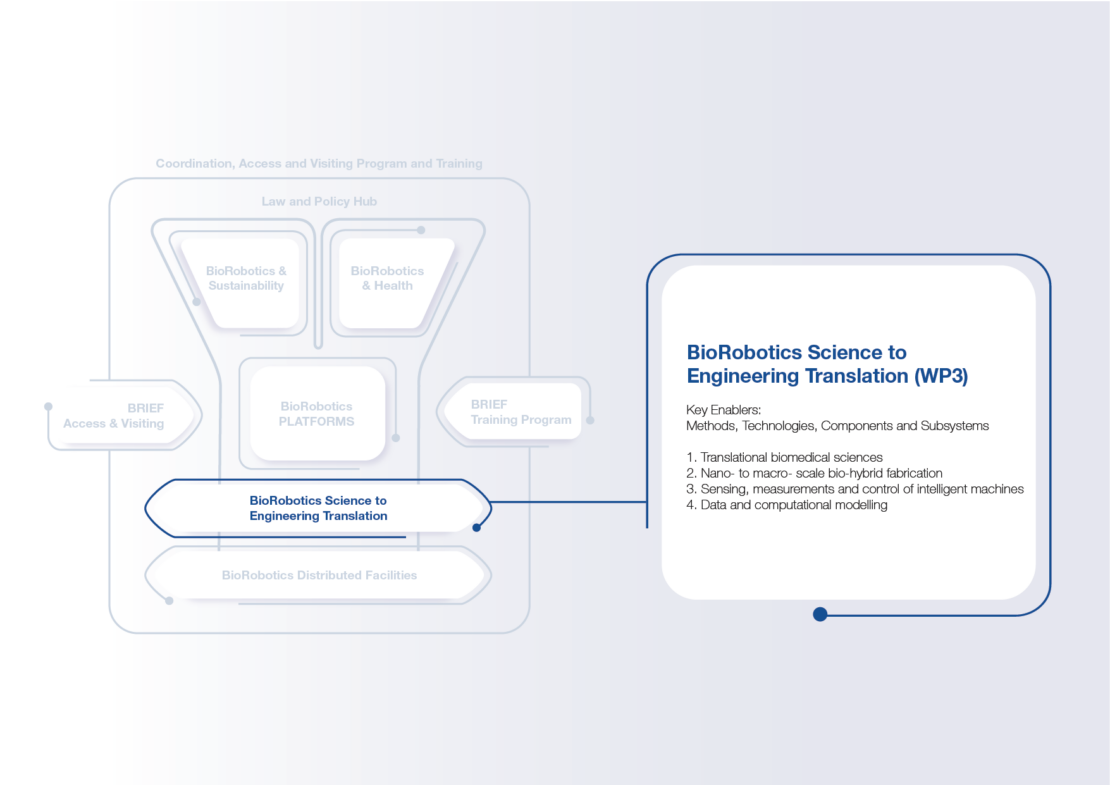
The BioRobotics platforms block, WP4, includes the enhancement of existing facilities for developing integrated biorobotic platforms, which can be accessed by researchers looking for equipped facilities and competences to assess their technology.
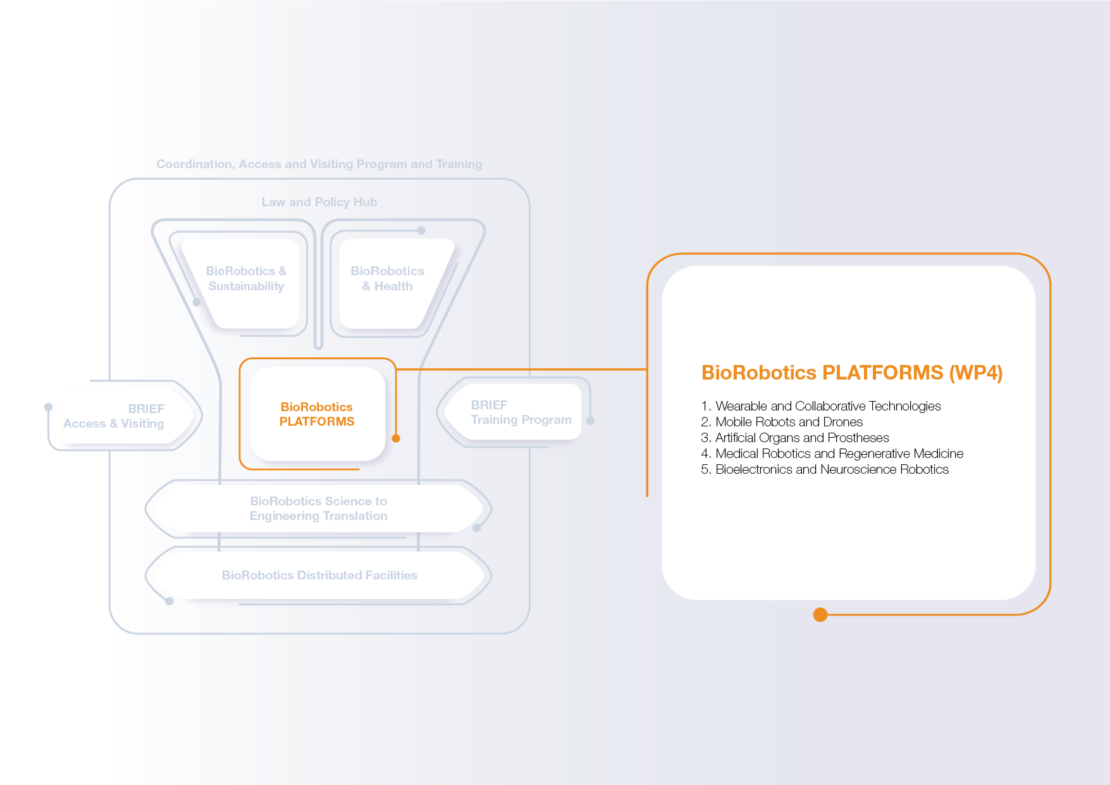
To boost innovation, it is essential translating biorobotic technologies and systems into concrete problems. The two blocks of Biorobotics & Health, WP5, and BioRobotics & Sustainability, WP6, are parallel extending branches of the BioRobotics platforms: here biorobotics systems will be declined or assessed into concrete application scenarios, where the main goal is not proposing a technology, but solving a problem with impact onto sustainability or health.
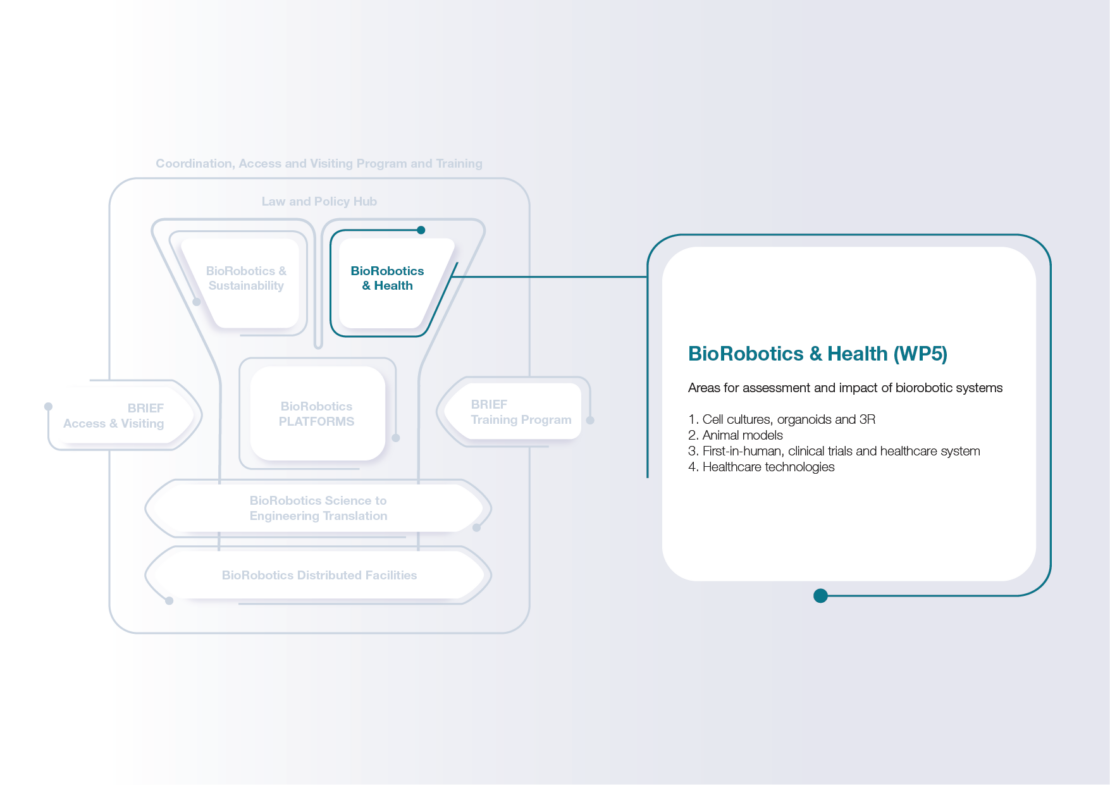
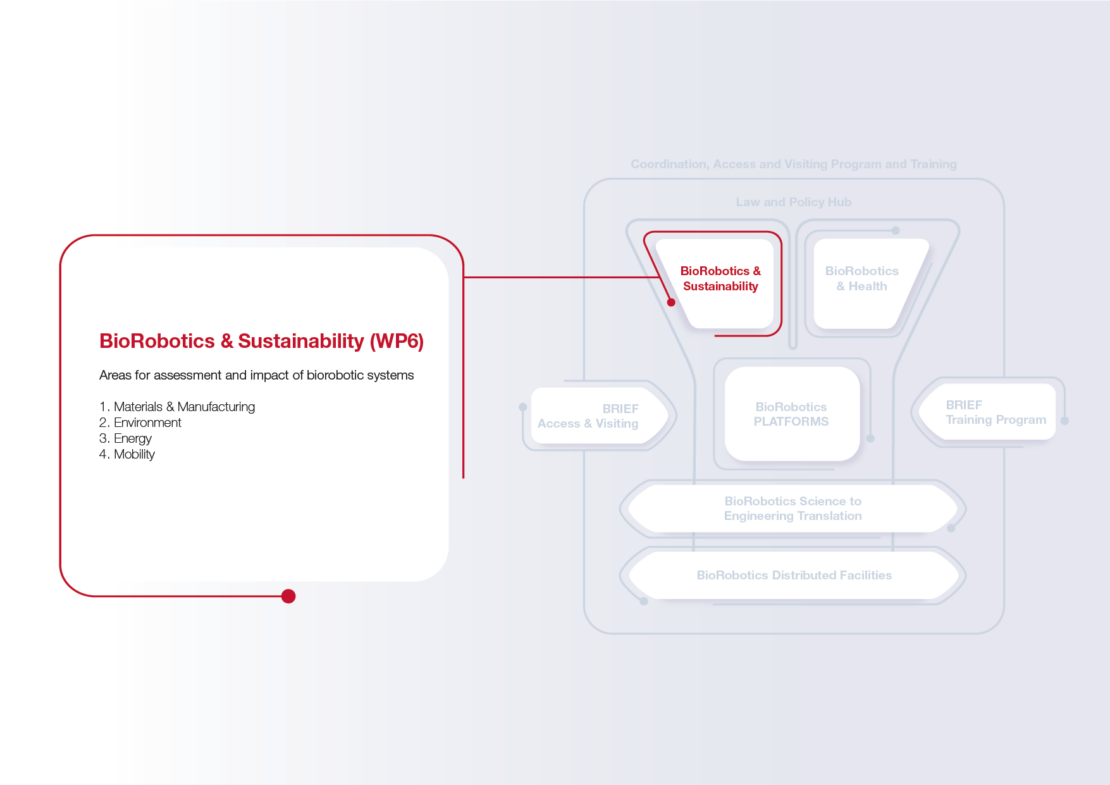
Last but not least, all the BRIEF activities will be framed in a Law and Policy Hub, WP7, which will address research on legal aspects associated to OA and FAIR policies.



